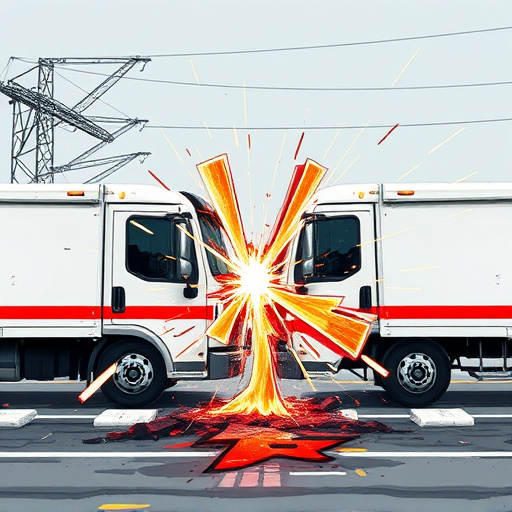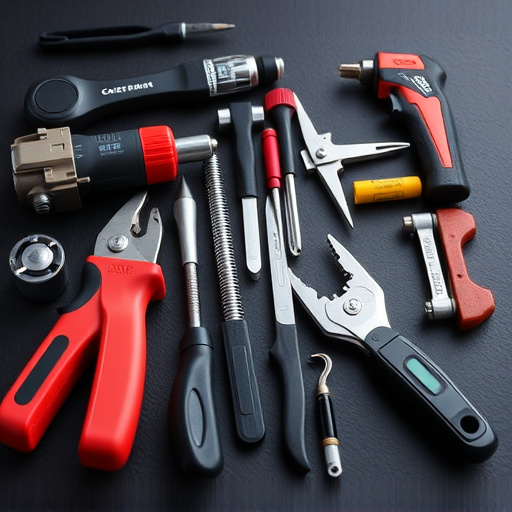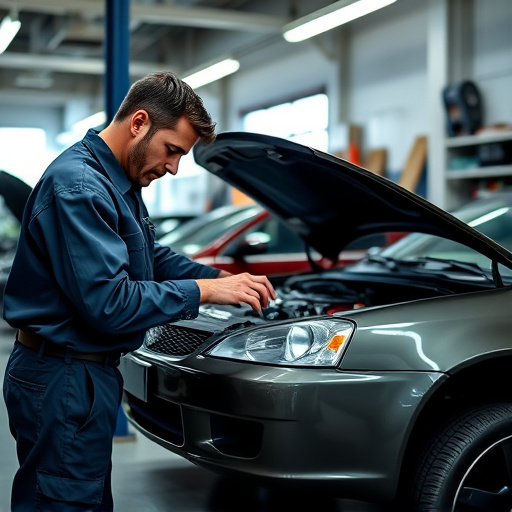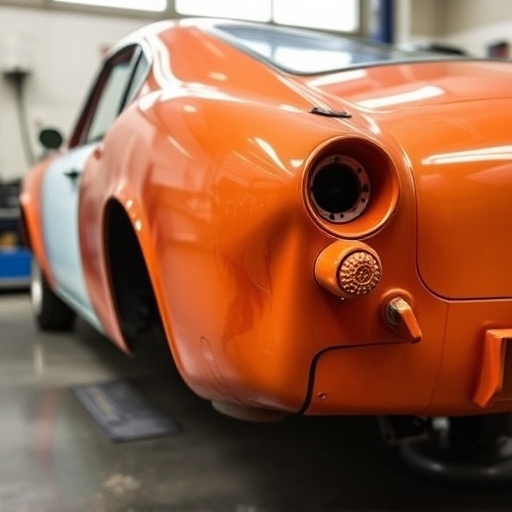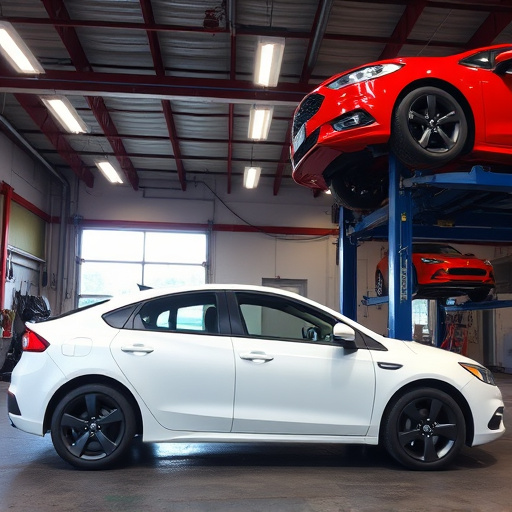A vehicle delivery inspection is a crucial quality control step ensuring consumer safety and satisfaction in the automotive industry. Trained professionals conduct thorough examinations of mechanical systems, lighting, tires, safety features, and exterior condition to identify pre-delivery defects or discrepancies. This process fosters transparency, builds trust, and protects buyers' investments. Proactive quality control follows inspection, addressing minor issues with maintenance plans and severe damage requiring specialized collision repair services for maximum accountability.
In today’s automotive industry, a meticulous vehicle delivery inspection is paramount for ensuring quality and safety. This crucial process guarantees that vehicles meet high standards before reaching their final destinations. From understanding the purpose of each inspection to following a comprehensive step-by-step guide, this article unveils the key aspects of a successful vehicle delivery inspection process. Discover how to ensure customer satisfaction and minimize risks through post-inspection actions.
- Understanding the Purpose of Vehicle Delivery Inspection
- The Step-by-Step Inspection Process
- Ensuring Quality and Safety Through Post-Inspection Actions
Understanding the Purpose of Vehicle Delivery Inspection

A vehicle delivery inspection is a crucial process that ensures the smooth transition of a car from the manufacturer to its new owner. This inspection serves as a quality control measure, identifying any defects or discrepancies before the vehicle leaves the dealership or distribution center. It plays a vital role in safeguarding consumer rights and ensuring customer satisfaction. By thoroughly examining various aspects of the vehicle, from mechanical systems to exterior condition, inspectors can pinpoint issues that may have been overlooked during production or transportation.
This meticulous process involves a comprehensive check of critical components, including brakes, lighting, tires, and safety features. It also assesses the overall aesthetic condition of the vehicle’s body, looking for dents, scratches, or paint flaws. Many dealerships and auto body shops employ trained professionals to conduct these inspections, leveraging their expertise in vehicle body repair and auto body services to detect even subtle imperfections. Understanding the purpose behind this meticulous inspection process empowers both buyers and sellers, fostering transparency and building trust in the automotive industry.
The Step-by-Step Inspection Process
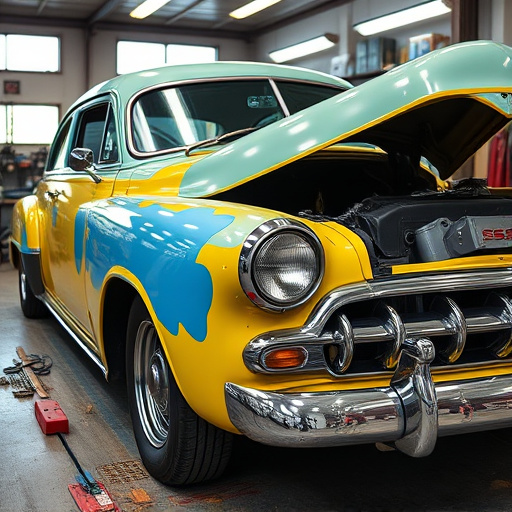
The process of a vehicle delivery inspection is meticulous and structured to ensure customer satisfaction and quality assurance. It begins with a thorough visual examination, where every inch of the car is scrutinized for any signs of damage or wear. This includes checking the exterior paint, looking for dents, cracks, or scratches, and inspecting the tires for uneven tread patterns that might indicate previous alignment issues.
The next step involves lifting the vehicle on a hoist to access the undercarriage. Here, mechanics search for leaks, rust, and any signs of past accidents or poor maintenance. This critical stage is where potential hidden damage can be uncovered, especially in the case of auto collision repair or vehicle body shop work. Following this, the interior is given equal attention, with checks on the seats, dashboards, and all electrical components to ensure they function correctly. This meticulous process guarantees that customers receive a vehicle in pristine condition, ready for its new journey.
Ensuring Quality and Safety Through Post-Inspection Actions
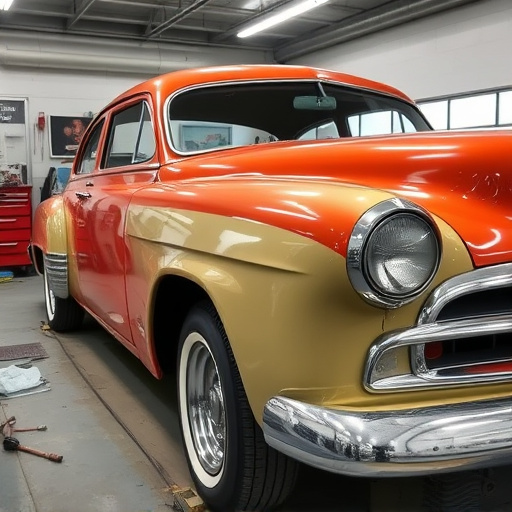
After a thorough vehicle delivery inspection, the next critical step is taking proactive measures to ensure quality and safety. This involves addressing any identified issues discovered during the inspection process. For minor defects or wear and tear, immediate repair or replacement may not be necessary. Instead, establishing a preventive maintenance schedule can prolong the vehicle’s lifespan and enhance its overall condition.
For more severe damage, such as those resulting from car collisions or requiring vehicle restoration, specialized services like collision repair should be engaged. Professional technicians are equipped to handle complex repairs, ensuring that the vehicle meets safety standards and regains its pre-incident condition. This step not only safeguards the customer’s investment but also promotes a culture of accountability and excellence within the delivery inspection process.
Vehicle delivery inspection is a critical process that ensures vehicles are safe and of high quality before reaching their final destinations. By understanding the purpose, following the step-by-step guide, and taking appropriate post-inspection actions, businesses can streamline their operations, maintain customer satisfaction, and uphold their reputation in the competitive automotive industry. This meticulous approach to vehicle delivery inspection is a game-changer, fostering trust among clients and guaranteeing their peace of mind on the road.


